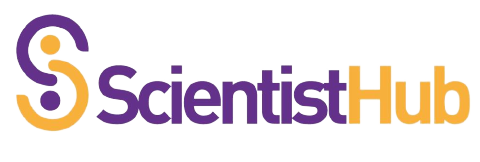In the era of dynamic business environments, the Sales and Operations Planning (S&OP) process stands out as a beacon of hope for businesses aiming to strike a balance between demand and supply. S&OP is a collaborative approach that allows companies to align their financial, strategic, and tactical plans to achieve a streamlined operation. In this article, we’ll delve deep into the S&OP process, exploring its significance, steps, benefits, best practices, and the latest tools infused with AI technology.
What is S&OP?
Sales and Operations Planning (S&OP) is an integrated business management process, which helps in making balanced and aligned operational plans. These plans cater to the ever-changing demands of customers by syncing up functions like sales, marketing, production, and finance.
Why is S&OP Important ?
- Alignment across the board: S&OP helps in ensuring that all departments within a business are aligned in their goals and objectives, ensuring seamless operations.
- Improved Forecast Accuracy: Through consistent review and alignment, businesses can enhance their demand forecasting, reducing stockouts and overstock scenarios.
- Enhanced Customer Service: By balancing demand and supply, companies can ensure timely deliveries, leading to improved customer satisfaction.
- Optimized Inventory Levels: S&OP aids in managing inventory efficiently, which in turn leads to cost savings.
The Five-Step S&OP Process
- Data Gathering: The first step involves collecting relevant data from all sources. This includes sales data, inventory levels, production capacity, supplier lead times, etc.
- Demand Planning: This step involves forecasting the future demand for products or services. The sales and marketing teams primarily undertake this by considering factors like historical data, market trends, and promotional activities.
- Supply Planning: Here, the focus shifts to assessing how the company can meet the anticipated demand. Production schedules, inventory levels, supplier capacities, and potential bottlenecks are evaluated.
- Pre-S&OP Meeting: In this phase, representatives from sales, marketing, operations, finance, and other relevant departments come together. They review and refine the demand and supply plans, ensuring that both are aligned and achievable.
- Executive S&OP Meeting: This is the final and perhaps the most crucial step. The top management reviews the consolidated plan and makes strategic decisions. Once approved, the plan is implemented across the organization.
Best Practices for an Effective S&OP Process
- Top Management Involvement: For S&OP to be successful, it requires the active participation and buy-in from the top management.
- Use of Technology: Leverage advanced tools like AI and machine learning for better forecasting and data analytics.
- Cross-Functional Collaboration: Ensure all departments communicate and collaborate efficiently. This will prevent silos and ensure a unified approach.
- Continuous Review: The business environment is dynamic. Regularly review and adjust your S&OP plans to stay relevant.
- Educate and Train: Make sure everyone involved understands the process, its importance, and their role in it.
S&OP Tools and the Advent of AI
Modern S&OP requires the assistance of advanced tools to facilitate data collection, analysis, and collaborative planning. Some prevalent S&OP tools in use today include:
- ERP Systems: Enterprise Resource Planning systems integrate various business processes into a single unified system. This aids in ensuring that data across departments is consistent and up-to-date.
- Dedicated S&OP Software: Tools like Kinaxis RapidResponse, Oracle Demantra, and SAP Integrated Business Planning (IBP) are designed specifically for the S&OP process, providing functionalities like scenario planning, simulation, and collaborative workspaces.
- Advanced Analytics Platforms: These tools assist in dissecting large data sets to glean insights and patterns, aiding in more accurate demand forecasting.
With the progression of technology, Artificial Intelligence (AI) has seamlessly integrated into S&OP tools, enhancing their capabilities:
- Improved Forecast Accuracy: AI algorithms can analyze vast amounts of data at exceptional speeds, uncovering patterns that might be missed by human analysts. This leads to more accurate demand forecasts.
- Real-time Adjustments: AI can predict disruptions in supply chains in real-time, allowing businesses to adjust their strategies instantaneously.
- Scenario Simulations: With AI, businesses can simulate numerous scenarios to evaluate the potential outcomes of different strategies, thus aiding in more informed decision-making.
Challenges in Implementing S&OP
Implementing a successful S&OP process is not without its hurdles. Here are some challenges businesses might encounter:
- Cultural Resistance: Employees, and sometimes even management, can resist change, especially when new processes and tools are introduced. This resistance can stem from a lack of understanding or fear of the unknown.
- Data Inaccuracies: S&OP relies heavily on accurate data. Inaccurate or outdated data can lead to flawed planning and decision-making.
- Lack of Cross-Functional Collaboration: The S&OP process requires different departments to collaborate seamlessly. Siloed operations can hinder effective communication and planning.
- Inadequate Technology Infrastructure: Not having the right tools or technology can make it difficult to collect, analyze, and act on data effectively.
- Misalignment of Objectives: Sometimes, individual departments might prioritize their goals over the company’s overall objectives, leading to misaligned strategies and conflicts.
- Skills Gap: The S&OP process demands a unique skill set. There might be a shortage of personnel trained in S&OP, or current employees might require additional training.
- Volatile Market Conditions: Rapidly changing market scenarios can make it challenging to stick to plans, and businesses might find it difficult to adapt their S&OP process quickly.
Conclusion
In today’s complex business landscape, where AI integration is becoming a norm, the S&OP process is not just a competitive advantage but a necessity. It allows companies to navigate challenges efficiently, respond to market changes proactively, and ensure a seamless alignment between various business functions. Recognizing the challenges and addressing them head-on ensures that the implementation is robust and delivers the expected results. With the right tools and an emphasis on AI-driven insights, businesses can ensure they are always a step ahead in the market.
